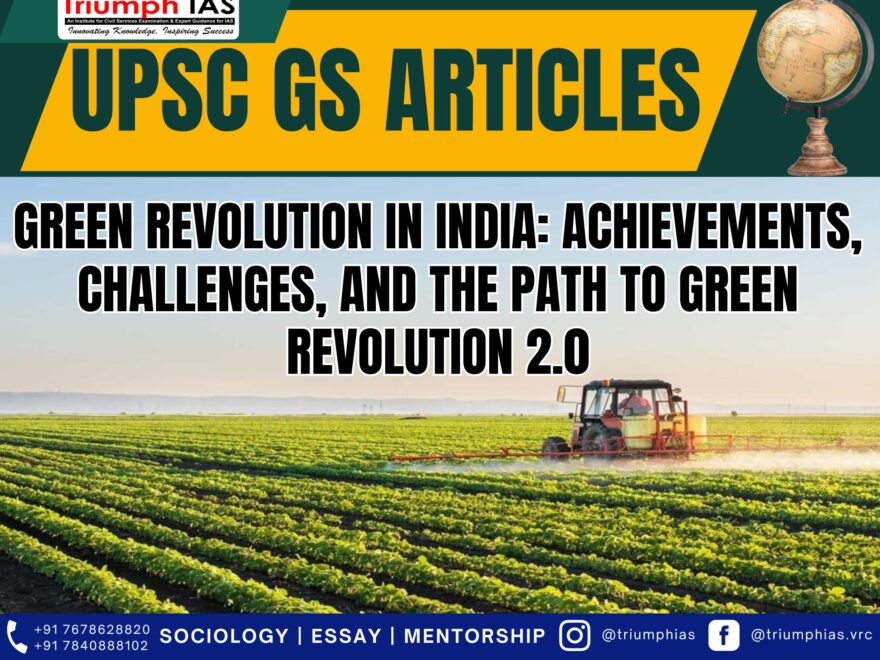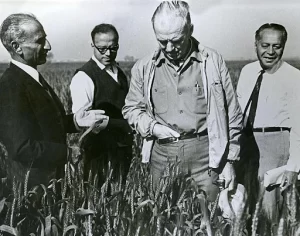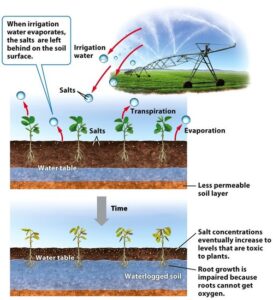Green Revolution: A quick recap of what we achieved
(Relevant for General Studies Paper | Economics| Prelims/Mains)
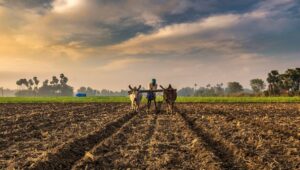
Green Revolution: A quick recap of what we achieved
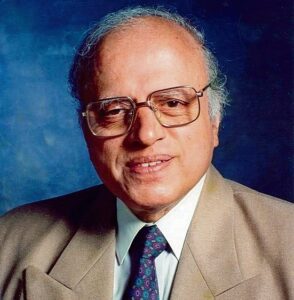
M.S. Swaminathan has passed away, but his influence endures among every student and scientist in the field of agriculture. He is best known for collaborating with Norman Borlaug to initiate the Green Revolution in India during the mid-1960s, a critical period marked by consecutive droughts.
The Green Revolution played a pivotal role in averting mass starvation, a scenario that seemed imminent at the time. India was already labeled a “ship to mouth” economy, relying on the import of 10 million tonnes from the US through the P.L.480 scheme. Unfortunately, the country lacked the foreign exchange to meet these demands. The gravity of the situation led Prime Minister Lal Bahadur Shastri to appeal to the nation to “skip a meal in a week,” and even wheat-based products, including chapattis, were excluded from wedding festivities.
Green revolutionThe Green Revolution constituted a significant endeavour aimed at augmenting the production and quality of food crops, particularly wheat and rice, in India. This initiative introduced pioneering technologies, including high-yielding seed varieties, fertilizers, pesticides, irrigation, and mechanization. Objectives:
Key Features:
|
Need for Green revolution
- In the 1960s, India confronted a dire food crisis marked by swift population growth, inadequate agricultural productivity, recurrent droughts, and reliance on imported food.
- India found itself susceptible to external pressures and political interventions from food-exporting nations, particularly the United States, which utilized food assistance as a diplomatic and leverage tool.
- The primary goals for India were to attain self-sufficiency and ensure food security for its population, aiming to alleviate poverty and malnutrition. India aspired to modernize its agricultural sector, making it more streamlined, profitable, and globally competitive.
Benefits of Green revolution
- Enhanced Food Production: The Green Revolution brought about a substantial surge in agricultural productivity by introducing new high-yielding crop varieties, such as dwarf wheat and rice. These varieties yielded more produce per hectare of land, effectively addressing the escalating global demand for food. For instance, during 1978–1979, a remarkable spike in crop production resulted in a grain output of 131 million tonnes, positioning India among the world’s foremost agricultural producers.
- Decreased Dependence on Food Imports: India transitioned into a net exporter of wheat, rice, and other food grains like rye, maize, sorghum, buckwheat, bajra, and ragi, with negligible imports. In the fiscal year 2020-21, India achieved record-high rice exports of 18.5 million tonnes and wheat exports of 2.1 million tonnes, the highest in six years.
- Alleviation of Poverty: Elevated agricultural productivity often equates to increased incomes for farmers, contributing to poverty alleviation. The Green Revolution played a pivotal role in lifting numerous small-scale farmers out of poverty by boosting their crop yields and income levels.For instance, the rural poverty ratio in India declined from 50.1% in 1993-94 to 25.7% in 2011-12, partially attributed to the impact of the Green Revolution.
- Technological Progress: The Green Revolution introduced farmers to cutting-edge agricultural technologies, encompassing improved seeds, fertilizers, and pesticides. These technological advancements persist in benefiting agriculture today, fostering sustainable practices and heightened efficiency. The adoption of improved seeds has augmented the genetic diversity of crops, enhancing resilience against pests, diseases, and climate variations. Mechanized farm tools, such as tractors, harvesters, and irrigation systems, have curtailed labor costs and augmented farm productivity.
- Rural Advancement: Elevated agricultural productivity can spur rural development, empowering farmers to invest in their communities. This, in turn, leads to enhanced infrastructure, education, and healthcare in rural areas.
- In India, for example, the Green Revolution prompted the expansion of rural roads, electrification, irrigation, and communication networks, enhancing the accessibility and connectivity of rural regions.
- Mitigation of Land Conversion: By amplifying crop yields, the Green Revolution mitigated the necessity to convert forests and other natural habitats into agricultural land. This has yielded positive environmental effects by conserving biodiversity and reducing deforestation.
- Economic Expansion: The escalated agricultural productivity stemming from the Green Revolution has been correlated with overall economic growth in various countries. Agriculture emerges as a pivotal driver of economic development in numerous regions, and augmented yields can catalyze growth across the entire economy.
Challenges brought by the Green Revolution
- Environmental Impact: The Green Revolution induced environmental degradation through the utilization of synthetic fertilizers and pesticides, contributing to soil erosion and water pollution. The dependence on modern agricultural technologies has rendered certain countries and communities reliant on external inputs, which can be costly and susceptible to market fluctuations.
- Consequence on Biodiversity: The Green Revolution resulted in the decline of biodiversity and genetic diversity among crops, along with the displacement of indigenous crops and traditional farming practices. Notably, the production of wheat and rice doubled post the Green Revolution, while other food crops, including indigenous rice varieties and millets, experienced a decrease.
- Social and Economic Ramifications: The Green Revolution instigated social and economic disparities and conflicts among farmers, regions, and countries. For instance, it has been associated with farmer suicides, rural indebtedness, and droughts in India.
- Heightened Crop Vulnerability: The Green Revolution amplified the susceptibility of crops to pests, diseases, and climate change. The monoculture of rice and wheat, for instance, heightened their vulnerability to outbreaks of pests and diseases, such as the brown plant hopper and wheat rust.
Can Green Revolution 2.0 become a Solution to the Green Revolution
Green Revolution 2.0 is envisioned as a strategy to enhance the adaptability and resilience of agriculture to evolving climate and socio-economic conditions, ensuring food and nutrition security for present and future generations.
Key Features of Green Revolution 2.0 include:
- Biotechnology and Genetic Engineering: Emphasizing biotechnology and genetic engineering to cultivate crops with heightened resilience to climate change, pests, and diseases. Responsibly adopting genetically modified (GM) crops can contribute to increased productivity and reduced environmental impact.
- Precision Agriculture: Utilizing advanced technologies like GPS-guided tractors and drones to optimize resource use, including water, fertilizers, and pesticides. Precision agriculture enhances efficiency while reducing the environmental footprint of farming.
- Sustainability: Prioritizing sustainability by endorsing practices that conserve soil health, diminish chemical inputs, and minimize the environmental repercussions of agriculture. This encompasses organic farming, agro ecology, and integrated pest management.
- Diversification: Unlike the initial Green Revolution, which concentrated on a few staple crops like wheat and rice, Green Revolution 2.0 advocates for crop diversification. Encouraging the cultivation of a broader array of crops enriches nutrition, mitigates risks linked to mono-cropping, and safeguards biodiversity.
- Holistic Approach: Taking a holistic stance towards agriculture, recognizing that it extends beyond crop production to encompass aspects like soil health, food processing, marketing, and value addition. Integrated approaches address the entirety of the food supply chain.
- Environmental Considerations: Undertaking efforts to alleviate the adverse environmental impacts linked to modern agriculture, such as soil erosion, water pollution, and greenhouse gas emissions. Sustainable practices strive to curtail these effects.
- Adaptation to Climate Change: In response to the challenges posed by climate change, Green Revolution 2.0 endeavors to develop crop varieties and practices resilient to changing weather patterns and extremes.
Reference: The Indian Express
Related Blogs…
 |
 |
Frequently Asked Questions:
1. Question: What were the primary objectives of the Green Revolution in India, and how did it impact the country’s food production?
Answer: The Green Revolution aimed to achieve food self-reliance, enhance farmers’ income, and modernize agriculture. It significantly increased food production and made India self-sufficient in grains.
2. Question: Discuss the environmental challenges brought about by the Green Revolution and how Green Revolution 2.0 aims to address them.
Answer: The Green Revolution led to environmental issues like soil erosion and pesticide use. Green Revolution 2.0 focuses on sustainability and environmentally friendly practices.
3. Question: How can Green Revolution 2.0 contribute to enhancing agricultural resilience in the face of climate change and evolving socio-economic conditions?
Answer: Green Revolution 2.0 emphasizes biotechnology, precision agriculture, sustainability, and crop diversification to make agriculture more adaptable to changing circumstances.
4. Question: What are the key features of Green Revolution 2.0, and how do they differ from the initial Green Revolution?
Answer: Green Revolution 2.0 includes biotechnology, precision agriculture, sustainability, diversification, and a holistic approach, focusing on environmental considerations and climate change adaptation.
5. Question: Explain the concept of precision agriculture and its significance in modern farming.
Answer: Precision agriculture utilizes technology like GPS and data-driven decision-making to optimize resource use, reduce wastage, and enhance farming efficiency. It’s crucial for sustainable agriculture and improved productivity.
GS Related Practices Questions…
To master these intricacies and fare well in the Sociology Optional Syllabus, aspiring sociologists might benefit from guidance by the Best Sociology Optional Teacher and participation in the Best Sociology Optional Coaching. These avenues provide comprehensive assistance, ensuring a solid understanding of sociology’s diverse methodologies and techniques.
META TAGS:
Green Revolution, Green Revolution UPSC, Green Revolution in India, Green Revolution 2.0, Agriculture, India, Achievements, Challenges, Benefits, Environmental Impact, Sustainability, Biotechnology, Precision Agriculture, UPSC Paper Sample Questions

Why Vikash Ranjan’s Classes for Sociology?
Proper guidance and assistance are required to learn the skill of interlinking current happenings with the conventional topics. VIKASH RANJAN SIR at TRIUMPH IAS guides students according to the Recent Trends of UPSC, making him the Best Sociology Teacher for Sociology Optional UPSC.
At Triumph IAS, the Best Sociology Optional Coaching platform, we not only provide the best study material and applied classes for Sociology for IAS but also conduct regular assignments and class tests to assess candidates’ writing skills and understanding of the subject.
Choose The Best Sociology Optional Teacher for IAS Preparation?
At the beginning of the journey for Civil Services Examination preparation, many students face a pivotal decision – selecting their optional subject. Questions such as “which optional subject is the best?” and “which optional subject is the most scoring?” frequently come to mind. Choosing the right optional subject, like choosing the best sociology optional teacher, is a subjective yet vital step that requires a thoughtful decision based on facts. A misstep in this crucial decision can indeed prove disastrous.
Ever since the exam pattern was revamped in 2013, the UPSC has eliminated the need for a second optional subject. Now, candidates have to choose only one optional subject for the UPSC Mains, which has two papers of 250 marks each. One of the compelling choices for many has been the sociology optional. However, it’s strongly advised to decide on your optional subject for mains well ahead of time to get sufficient time to complete the syllabus. After all, most students score similarly in General Studies Papers; it’s the score in the optional subject & essay that contributes significantly to the final selection.
“A sound strategy does not rely solely on the popular
Opinion of toppers or famous YouTubers cum teachers.”
It requires understanding one’s ability, interest, and the relevance of the subject, not just for the exam but also for life in general. Hence, when selecting the best sociology teacher, one must consider the usefulness of sociology optional coaching in General Studies, Essay, and Personality Test.
The choice of the optional subject should be based on objective criteria, such as the nature, scope, and size of the syllabus, uniformity and stability in the question pattern, relevance of the syllabic content in daily life in society, and the availability of study material and guidance. For example, choosing the best sociology optional coaching can ensure access to top-quality study materials and experienced teachers. Always remember, the approach of the UPSC optional subject differs from your academic studies of subjects. Therefore, before settling for sociology optional, you need to analyze the syllabus, previous years’ pattern, subject requirements (be it ideal, visionary, numerical, conceptual theoretical), and your comfort level with the subject.
This decision marks a critical point in your UPSC – CSE journey, potentially determining your success in a career in IAS/Civil Services. Therefore, it’s crucial to choose wisely, whether it’s the optional subject or the best sociology optional teacher. Always base your decision on accurate facts, and never let your emotional biases guide your choices. After all, the search for the best sociology optional coaching is about finding the perfect fit for your unique academic needs and aspirations.
To master these intricacies and fare well in the Sociology Optional Syllabus, aspiring sociologists might benefit from guidance by the Best Sociology Optional Teacher and participation in the Best Sociology Optional Coaching. These avenues provide comprehensive assistance, ensuring a solid understanding of sociology’s diverse methodologies and techniques. Sociology, Social theory, Best Sociology Optional Teacher, Best Sociology Optional Coaching, Sociology Optional Syllabus.
Best Sociology Optional Teacher, Sociology Syllabus, Sociology Optional, Sociology Optional Coaching, Best Sociology Optional Coaching, Best Sociology Teacher, Sociology Course, Sociology Teacher, Sociology Foundation, Sociology Foundation Course, Sociology Optional UPSC, Sociology for IAS,
Follow us :



Find More Blogs…
| Compare and contrast Karl Marx’s and Max weber’s | Karl Marx- Historical Materialism |
| Talcott Parsons : Social system | Scope of the subject and comparison with other social sciences |

